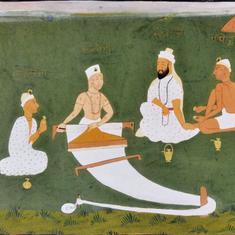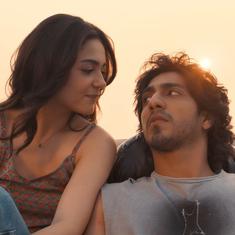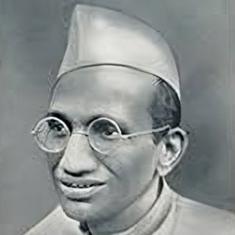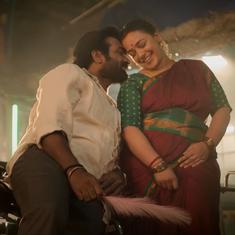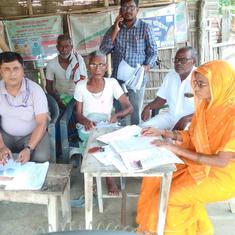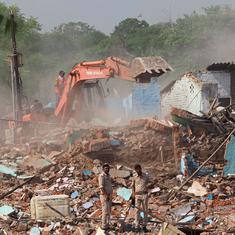I grew up in a supposedly “caste-less” world. I grew up not knowing my caste. My surname was just a cool name I had, one that linked me to my father’s family, and made it apparent that I come from a line of heritage restaurants and celebrated scientists. My name made it clear that I was Punjabi. I grew up in a world where my tiny high school batch of 47 people went unquestioned. My access to spaces in my city was just like that – a fact of my life.
But I also grew up listening to vicious rhetoric against reservation, to aggrieved seniors angry at the race for seats in engineering colleges, and I grew up with humanities classes at school not addressing caste. I then went on to study at a private college, where, shielded from the world outside (read public universities), I thought about caste in abstract terms. In a world far, far away, caste operates – but me? It is not for me, I don’t care about caste.
Caste in small worlds
It is true, I don’t. Caste does not impede my life. It is not my first thought when I wake up every morning, my interactions are not mediated by the idea that the other person might take offence at my name. I don’t think before I give my full name, I don’t worry, I don’t mask it. I say it because I don’t care what my caste is. In the South Asian context, as I will later learn, this is my privilege. A genetic privilege in some ways, a thing that I got at birth and will probably retain through the course of my life. I care so little about caste and yet caste is the thing that makes my world go round. My friends in grad school, undergrad, at my workplace – are all upper caste. I say I picked my friends, we found each other in this big, big world – but unfortunately, the world is small. I know more people in New York than in Ahmedabad – a testament to my caste and class privilege.
I work with Kantibhai. He is a Dalit man who works with scheduled castes in villages in Gujarat. He tirelessly files cases against atrocities, advocates for more rights for those oppressed, and thinks about his caste all the time. He taught himself enough English so that when he petitions the President in cases of violence against Dalits, his petitions are read. In his kind, booming voice, he collects the Dalits in the villages we survey and tells them about the constitution, about the law, about the whole world that remains inaccessible to them.
I sit with him in these interviews as he does animated impressions – of interactions between non-Dalits and Dalits, mostly to tell me that even shaking hands is an unimaginable thought to people here. He accidentally calls women his age maaji, and he makes us laugh about petty politics that often undergird village life. Kantibhai recites poetry about Ambedkar on the go; he takes us to all the Ambedkar statues in the villages and makes sure we get a picture with them. And he tells me and our respondents how thankful he is that we care even a little bit about the stories Dalits have to share with us. He keeps asking me about Dalit politics in Punjab – and I sadly shake my head, tell him that I don’t know anything about it. I lived in a city far too sanitised to even have the opportunity to interact with anyone outside of my community.
As I flipped through Indian Philosophy, Indian Revolution: On Caste and Politics by Divya Dwivedi and Shaj Mohan, I found myself thinking about Kantibhai. I think about the world he inhabits and the world I inhabit. And it is true – there are two Indias. We both live in Ahmedabad, and the segregation even within cities, which Ambedkar had once hailed as an alternative to villages, is apparent. As the book walks you through the several ideas around caste, it reveals that the idea of a majority in India is lopsided. The book takes on what it means to participate in Dalit politics in recent years, how the upper caste “majority” is a conspiracy of power, and how Dalit lives have been impacted in more ways than one. But more importantly, the body of work that Dwivedi and Mohan build is staunchly to question post-colonial literature and literary theory. In this political space between coloniality and post-coloniality, Dwivedi and Mohan argue through these texts that decoloniality in India is not the answer to the question of caste. Upper caste hegemony extends above and beyond, using the excuse of abolishment of the status quo as a way to exert more control over subjugated populations.
A world outside caste
The Dalit call for revolution has always been undergirded by the abolishment of caste, but the imagination of the Indian state, and its nationalism, hinges on a precarious idea of Hindu identity that is created and explained over and over again so that the myth remains. Even Gandhi relied on this idea of an idyllic past to fight against colonial forces. The idea of Western reasoning, science, and other such conceptions, when co-opted into resistance by Dalits, becomes a threat to upper caste hegemony. Dwivedi and Mohan painstakingly break down these ideas, arguing that fascist states often insist on action and this orientation of action-led governance propels a society that is scared to think – but intellectualism at the lowest levels will propel a world outside of caste.
Dwivedi and Mohan are not just writing to excavate the idea of caste, they are framing a scholarship on caste that, instead of treating it as a fact of Indian society, considers it a conduit of identity and revolution. As I worked through the book, the urgency of the matter at hand was apparent throughout. The call to reason and scientific thinking, to enable the creation of a countermemory, is ever present. Archives that highlight the moment of India’s independence often study Indian constitutionalism and then Ambedkar as one of the figures in the framework – perhaps the reverse is true. It is Ambedkar’s work during the creation of the Constitution that has led to the upliftment of tens of thousands of people. It is Ambedkar that Kantibhai quotes when he visits these villages, entering houses with an affectionate Jai Bhim. He is not just a Dalit hero, he is the person that a whole country equates to the law. They tell me it is Babasaheb’s Qaida that made things better for them. He is the law, the constitution, and human rights for what constitutes a vast majority of “Indians”.
Dwivedi and Mohan insist that no articulation of Indian identity should be bereft of caste. Caste is not Hindu – it is South Asian. It operates beyond Hinduism, it is a structure that has become a sociological fact of life. Caste may even be more insidious than race – not instantly discernible but ever-present. It is the truth of and basic structure on which the society operates, and to treat it as tertiary is a disservice to the majority of the country.
As we continue to go through monumental changes, with electoral upheavals, this book will become essential reading. It is our loss if, in universities, our understanding of caste is still framed as a disciplinary tangent. Instead, it should be canon, and this book of essays definitely should be included.
Kantibhai proudly shows me the Ambedkar statue that they are constructing in Ahmedabad. There are indigo-blue posters everywhere. And there is a loud community, building the revolution. Jai Bhim, they say.

Indian Philosophy, Indian Revolution: On Caste and Politics, Divya Dwivedi and Shaj Mohan, edited by Maël Montévil, Westland.

